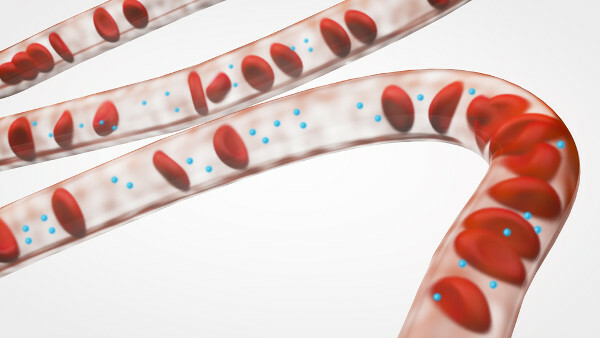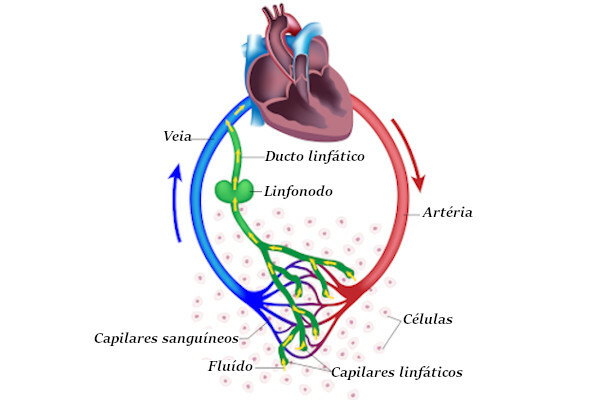The Food Chain is the path of matter and energy that always begins with producing beings and ends with decomposers.
It corresponds to the feeding relationship, that is, the absorption of nutrients and energy between living beings.
We can say that the food chain refers to the process in which a living being serves as food for another.
Components of the food chain
The components of the food chain correspond to every living part that composes it. They are classified into producers, consumers and decomposers, each of them represents a trophic level.
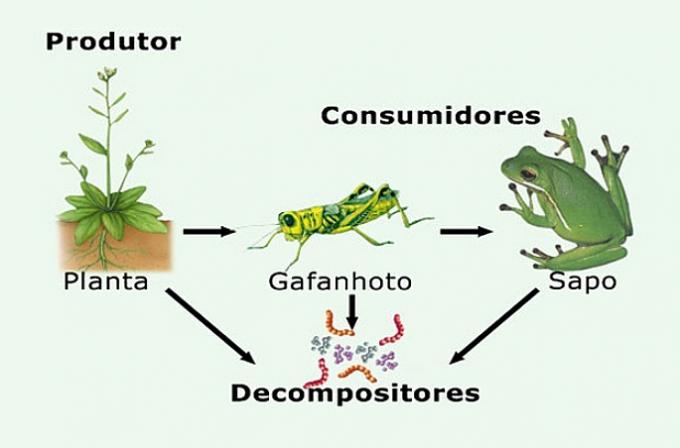
Producers
Producers are living beings that manufacture their own food through photosynthesis, that is, they are beings autotrophs.
They represent the first trophic level in the food chain and do not need to feed on other organisms. Examples of producers are plants and phytoplankton.
Consumers
consumers are beings heterotrophs, that is, they do not produce their own food and therefore need to seek energy in other beings to survive.
They are basically divided into:
- primary consumers: Represented by herbivores, feed on producing beings.
- Secondary consumers: Represented by carnivores, feed on primary consumers.
- tertiary consumers: Represented by large carnivores and predators.
It is important to remember that at this trophic level are the so-called detritivores, animals that feed on organic waste. Examples are vultures, earthworms, vultures, flies, etc.
Omnivorous Animals can also be primary or secondary consumers.
Decomposers
You decomposing beings they are important for the cycle of the food chain, they feed on decaying organic matter in order to obtain nutrients and energy.
In this process, they transform organic matter into inorganic material, which will be used by the producers, restarting the cycle.
Examples of decomposers are fungi, bacteria and some protozoa.
Learn more about trophic levels.
Examples
Food chains can be terrestrial or aquatic, let's know examples of each of them:
terrestrial food chain
The terrestrial food chain can be demonstrated by the following example:

After death, the organic remains of the beings will serve as food for the decomposing organisms, which after carrying out the process called mineralization (transformation of organic substances into inorganic), drive a new cycle, and these substances will be used by plants.
Read about the terrestrial ecosystem.
aquatic food chain
We can represent an aquatic food chain as follows:
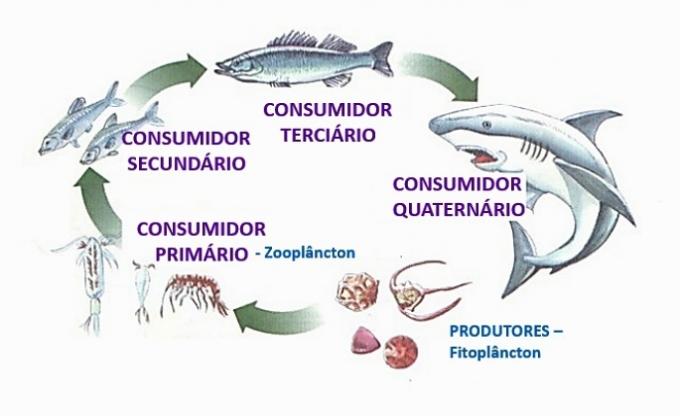
Phytoplankton is the main producer of aquatic environments, being consumed by zooplankton. In an aquatic food chain there are also decomposers.
Read about the aquatic ecosystem.
Trophic Level
Trophic levels represent the order in which energy flows in a given food chain.
At each trophic level there is a group of organisms with the same food characteristics. For example, primary consumers only feed on vegetables, while secondary and tertiary consumers are carnivores.
At ecological pyramids represent the trophic interactions between species in a community.
food web
THE food web it consists of the interconnection between various food chains. They actually represent what happens in nature, as they demonstrate the different relationships that exist between living beings.
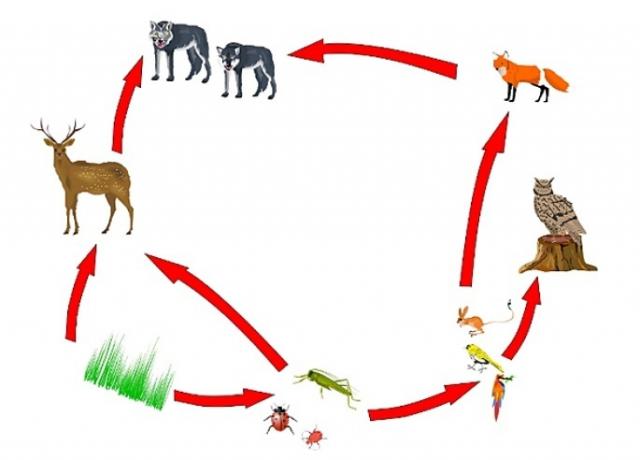
In a food chain, the arrows flow in a unidirectional direction. Meanwhile, in the food web there are several arrows due to the greater number of food interactions and energy flow between organisms.
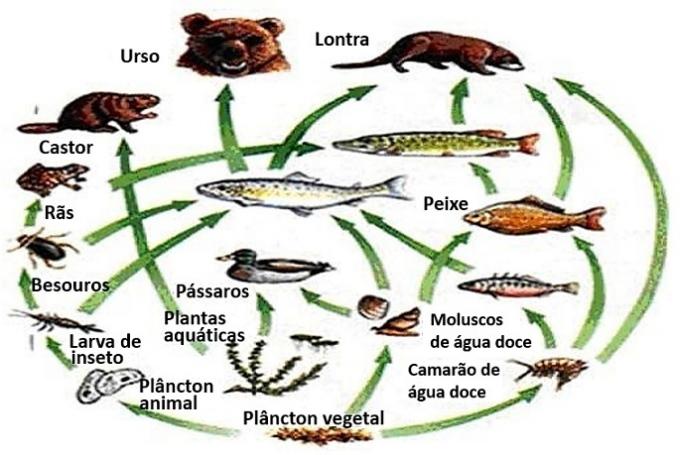
Also read about:
- ecosystem
- Autotrophs and Heterotrophs
- The 10 biggest predators in the animal kingdom
- Food chain exercises

